#theres a mouse loose in the hospital
Note
Do you know a lot of Aboriginal history?
So I work in what is called 'consulting archaeology' in Australia (what the USA and Canada apparently refer to as 'CRM'), and so i do work on a lot of projects relating to Aboriginal cultural heritage.
Aboriginal history, however, is a widely diverse concept, both in culture, time, and space. (And this is not even mentioning Torres Strait Islander people and history, which is a different category). There are more than 250 surviving Indigenous languages in Australia, and scientific research shows evidence of a history stretching back at least 65 000 years.
I cannot, and do not, know more information than a few drops in the water of such diverse history (and in the case of closed cultural practices, secret-sacred history/artefacts/knowledge, and restricted knowledge, nor should i know more than this).
I also, for the most part, tend to work in the eastern and southern areas of Australia, meaning any regional Aboriginal histories that i know for work exclude the vast majority of histories in the rest of Australia.
So do i know about some of Australia's Indigenous past? Of course. Its not only a requirement for my job, but also fascinating and diverse and an overwhelmingly important part of my country's past, present and future. And i wish it was a more acknowledged and taught part of our schooling in Australia.
But i do not consider myself to know "a lot of Aboriginal history". I have barely scratched the surface. And there are some parts that i will not, and should not, know or have access to as a young, non-Indigenous woman. And this is something that i respect. And i will forever be accepting (culturally appropriate) ways to learn more of it. I dearly love the fact that working in archaeology gives me more opportunities to sit down with community members and Elders, and learn parts of their history and stories from them. Not just the anglo-european written records of the past.
#ask#australia#Aboriginal and Torres Strait Islander Peoples#archaeology#australian archaeology#history#Indigenous peoples#theres a mouse loose in the hospital
23 notes
·
View notes
Text
Backstory for Songs
am i stealing @brooklyn-is-here‘s idea? yes. sorry
@piper-koko-barnes-rogers @buttons-and-gulons @lxwkey-as-hell @thatsmycigarbutyoucanborrowit
Scars To Your Beautiful: after temporarily getting over her eating disorder for the first time
Powerless: first time away from katherine (and the rest of her family)
Never Bloom Again: first breakup announcement
Stupid For You: when her and kath first started dating
Promise Me: theres a mouse loose in the hospital
The Things We Used To Share: second breakup
Ghost: journey with self harm since high school
Bad Idea: on and off with katherine
Girls: Gay Panic™
I Wanna Be Your Girlfriend: Gay Panic 2: Electric Boogaloo
21 Questions: before breaking up (again)
x ANA x: struggling with addiction in high school
Heroin: leaning on dr*gs for the first time since high school because of the breakup
Empty: eating disorder returns
Teenage heartbreak queen: it just fits okay. after finding out kath cheated again
1 note
·
View note
Text

,,,,,,,,,,,,,, at this point im just super disappointed that this isnt a real person
i wanted to see what kind of fantastic bizarre content furioustrashcoffee had and i have been bamboozled by yet another bot
#i did have at least one actual new follower this morning amidst my 5 bots#and like two yesterday#thank you random persons#(why are you here)#tumblr#theres a mouse loose in the hospital
7 notes
·
View notes
Note
Hi💜
What's your favorite history / historical event / individual / or group?💜
Oh SO many. That’s like asking me to pick a favourite child or something!!
My favourite things in archaeology tend to be the little things though. The sites and artefacts and stories that remind you that it is people that you are dealing with, first and foremost.
I love the parts of archaeology that make you realise how close the past is to you. That I probably can’t reach out and take its hand, but it’s standing on the other side of a pane of frosted glass and if you try you can probably line your palms up
But in about as specific an answer as I can give you, I work in Australian archaeology, so so many different aspects of Australian history are my favourite to research. Indigenous history and oral stories (tea breaks with the Elders, my great love 🥺) to parts of the historic colonial period. I especially love researching different historical migration, and the way that different cultural groups have interacted in the past.
11 notes
·
View notes
Note
Info dump - what is going on with archeologists in Egypt, and the tombs ?
Given that I am an Australian archaeologist with zero understanding of Egyptology, I have the following opinions:
The egyptologists are working with Egypt things. Probably in Egypt. Maybe not. I’m not sure.
Tombs are… intended for dead people. Sometimes have cool paintings. Usually don’t have sparkly items anymore.
I think the goings on of the archaeologists in Egypt is that they are just as unhinged as the rest of us.
Something something pyramids built using qualified architects and maths
Duatlings
@thatlittleegyptologist how did i do?
#yeah sorry Boni#i know absolutely NOTHING about eyptology#I'm qualified in Australian historical and Indigenous archaeology#nothing else#asks are fun anyway though#archaeology#ask#theres a mouse loose in the hospital
18 notes
·
View notes
Note
Could u pls undo dump. I'm 🥺 curious
I am always happy to ramble archaeological information at people, but I'm also incredibly indecisive, and need Actual Questions to answer, or topics to talk about
#i love asks so much#but i need actual parameters to talk in#archaeology#theres a mouse loose in the hospital#ask
4 notes
·
View notes
Text
As requested, the list of archaeology nemeses which i poses: (in no particular order other than #5 bc tumblrs formatting hates me right now, and i cant be bothered to fix it)
Whoever convinced the general public that archaeologists and paleontologists are the same thing (not the public themselves, i can be nice to them, but whoever started it.............. i just want to talk)
Trying to excavate in dry soil with high sand content and having sediment patches just... leak out in random spots from the pit walls
Cant Function A Mattock To Save My Life
Sieving wet clay is like sieving porridge and its TERRIBLE and HORRIBLE and DISGUSTING and makes HORRENDUS SOUNDS
As discussed, Munsell chart and my complete and utter inability to read colours correctly
Any varient of the "The archaeologists didnt figure this out it was some Normal Person Who Knows Crafts And Life Skills" my Dear Personal Friend i hate to rain on your anti-academia parade, but archaeologists ARE people (although jury's still out on normal for some of them...)
#i hope these are sufficient for six of my archaeology nemeses#i will hear criticism#but i will take none of it#archaeology#archaeologist problems#theres a mouse loose in a hospital
2K notes
·
View notes
Text
“We forget that all archaeology is the result of human behavior, of people like ourselves. Like us, they were born and grew up, loved, got married, had children, and died. They negotiated with one another, quarreled, sometimes got in fistfights, were occasionally hungry, and revered their ancestors. We have a common bond over the centuries and millennia, epitomized by the left-handed stone worker at Meer. Archaeologists have rich, compelling stories to tell, but all too often we shy away from the challenge.”
(Brian Fagan)
This will always be one of my absolute favourite quotes about archaeology ever and as such everyone else needs to be informed of it
2K notes
·
View notes
Note
Top 5 archaeological sites in Australia that you feel people should know more about? Or top 5 Australian artefacts?
I feel like I’ve talked a bit about artefacts in a few recent asks, and also I feel like a lot of Australian archaeology (and as such, sites) are very underrated, particularly on a global scale. Its often acknowledged in Australian archaeology that getting international academia to recognise the importance of our country’s archaeology is very very difficult.
While there’s a million and one sites I’d love to talk about, I’m going to TRY and give sites that relate to different aspects and locations
This is probably going to be long, so...
1. Nauwalabila, Madjedbebe (Malakunanja II), and the Deaf Adder Gorge region, Northern Territory (Aboriginal)
Rock shelters in this region, and specifically Madjedbebe, are currently the oldest location of human habitation in Australia. Dating evidence from 2017 excavations provided an estimate of earliest occupation of 50 000 years at certainty, possibly extending back as early as 65 000 (+/-6000). It also has provided a lot of evidence for research into the extensive grind stone technologies of the Pleistocene.
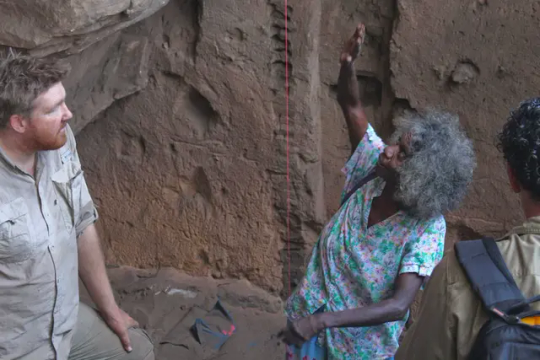
2. Cloggs Cave and the Buchan region of the Victorian Gippsland (Aboriginal)
So much research has been done into this region in various ways. Josephine Flood focused her research on Bogong Moth usage (and festivals) within this region, providing some of the earliest accepted academic research in support of Aboriginal peoples’ claims of large scale Bogong Moth Festivals in Australia’s highlands (although the fac that no one really believed communities until then…………..). In 2021 grind analysis found Bogong Moth residue, making this the earliest stone artefact with evidence of insect food remains. And in addition to that recent 2017 research in the area investigated Holocene occupation with Aboriginal community members, with a focus on understanding the interaction of spirituality with the resources found in the caves.

3. Mabuyag Island, Torres Strait Islands, Queensland (Torres Strait Islander)
Mabuyag Island (alternatively known as Mabuiag or Mabuyaagi) has archaeological evidence of human occupation since 7300 years ago. The island is both associated with recent religious practices associated with he heavy processing of dugong remains, and totemic associations with these, which played a role in early 2000s into community lead and directed archaeological research into ritual and religious traditions and practices. In addition to this, Mabuyag is the location of the first archaeological excavations in Australia to find pre-colonial pottery fragments. The fragments at the two sites on the island were associated with Melanesian and Papua New Guinean pottery trade. The excavations relating to pottery on the island played an important role in our understanding of domestic and international trade in pre-colonial Australia, and also formed an influence for the recent excavations at Lizard Island, 300km south, which identified the first datable domestically made pottery technology found in Australia.
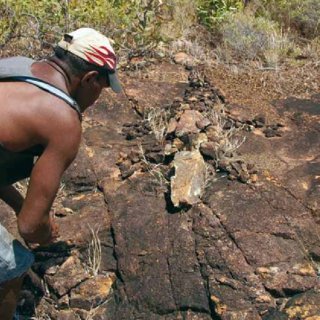
4. Hyde Park Barracks, Sydney, NSW
Hyde Park Barracks is part of a collection of colonial heritage structures in Australia, relating to Australia’s time as a penal settlement. Hyde Park Barracks in particular were the location of the housing of convict men from 1819 to 1830, with the 1830s to 1840s also involving the site being a location of additional convict punishment, and the base for the Board of Assignment of Servants. Following on from a reduction of convicts to NSW in the 1840s, the Barracks became the Female Immigration Depot, and the Orphan Institution, later becoming the Asylum for Infirm and Destitute Women.
This time period of women’s occupation provides some of the most interesting archaeological remains, as redevelopment and management of the site has found high rates of preservation within walls, and in areas below floorboards. This includes textiles and fabrics, papers, and other non-organic materials such as pipes (with their tobacco intact) stashed in what was once floor, wall, and ceiling cavities. Archaeological investigations in the area form one of the most detailed assemblages of artefacts relating to instituted women in the British Empire during the 19th century.
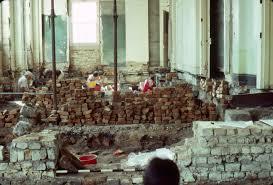

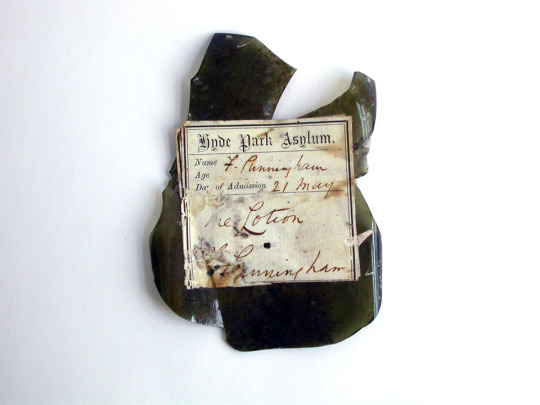
5. Notch Point, Western Australia (Multicultural heritage)
Notch Point is a site of varied and mixed archaeology, ranging from pre- and post- colonial period Aboriginal heritage, to diverse 19th century occupation of the region by Chinese, European, Malay, and Aboriginal peoples in association with pearling industries off the coast. In addition to this, the point is located on Dirk Hartog Island (otherwise known as Wirruwana), the site of the earliest European arrival in Western Australia in 1616, and contains archaeological evidence of both various early Dutch interactions with the island in 1616 and 1697, as well as French arrival in 1772, 1801, and 1818. Notch Point in particular also contains evidence of conflict between the predominantly Chinese population of the pearling industry, with white-Australian and European pearling masters, and pastoral agents. Its not a site that is widely discussed, but provides a fascinating overlay of the amount of varied cultural groups that can be present within Australia’s archaeological sites.

-
-
Honourable mentions to:
Lake Mungo and the Willandra Lakes which should 100% be on this list, but also I feel like I talk about it ALL the time and I wanted to mention sites that I actually don’t see discussed a lot. Theyre super important for cultural reasons, for archaeological reasons, and also for their role the development of archaeology, Aboriginal community consultation, and the role its played in developing repatriation practices in modern Australia. I have multiple posts about them HERE
Budj Bin Eel Traps in Victoria (same reasons, I’ve definitely talked about them before).
Juukan Gorge (and its destruction, im still horrified)
Harrietville Chinese Mining Village
Strangway Strings and The Peake Afghan Cameleer sites
Recherche Bay in Tasmania, and its 1792 French settlement sites
Homebush Mill & Mission Hall in QLD and Beowa National Park sites containing South Sea Islander heritage
#I feel like this constitutes a solid answer#i had fun#and hopefully people learn new things about Australian archaeology#and its diversity#sorry this took literally forever to answer#i got sick for a bit#and then its going to chill in my queue for a couple of days#archaeology#Australia#aboriginal and torres strait islander peoples#theres a mouse loose in a hospital#ask
73 notes
·
View notes
Text

... i think spell check has fundamentally misunderstood the context in which this word has been used
785 notes
·
View notes
Text
Side effect of archaeology that i didnt realise WAS a side effect of archaeology #1482
turns out i cant stop staring at the ground when walking across a paddock and could be staring at the sunset instead
(and no, i dont mean ‘dont trip and fall’ occasionally keeping an eye on your feet, i mean like gave myself a crick in my neck automatically scanning for artefacts level staring at the ground)
#were my friends laughing at me#yes#but such is life#archaeology#archaeologist problems#theres a mouse loose in a hospital
967 notes
·
View notes
Note
I'm taking a forensics course and I'm doing a lesson on dirt and just learned about the Munsell system of color notation and I immidiately wondered if that was a thing in archeology too
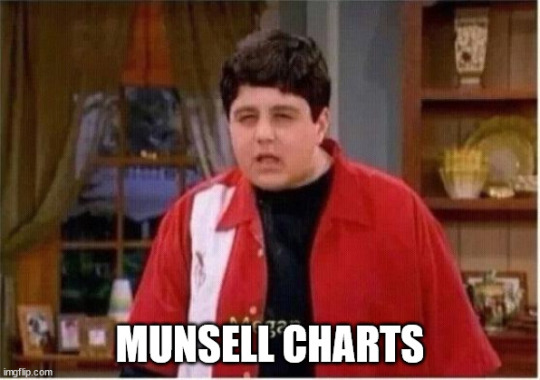
Nah all jokes aside Munsell books are super cook (and INSANELY expensive) and 100% a thing in archaeology (i dont use them much where i work, but they tend to be more common in research excavations, or in soil sample analysis off-site)
I, however, am notoriously HORRIBLE at judging dirt colours though so i consider them about... fifth?? on my list of arch nemeses
(I do love just sitting there and looking at the colours though)
#also i love your asks#this is gonna sit in my queue for a few days though#hope you dont think i havent answered it#archaeology#munsell#ask#theres a mouse loose in a hospital
94 notes
·
View notes
Note
I'm having so much fun describing dirt (I don't know what in doing)
SAME
#literally all i have been doing today is writing out sediment descriptions#i have no idea what these words mean#im using them anyway#in my imaginary world I'm running my hands through the dirt i am now describing#archaeology#archaeologist problems#ask#theres a mouse loose in a hospital
21 notes
·
View notes
Note
what's your favorite flavor of dirt aunt mouse?
I curse my own existence for admitting this
My deepest darkest secret
... its clay
the same part of my brain at age five that wanted to eat the playdough now wants to eat the clay. Sand is all gritty. Silt can be kind of dusty if its dry. But clay.... the toddler part of my brain wants it.
I'll place myself in self-exile from the archaeology-ness for this admittance
#thank you tay for your lovely asks theyve been making my week#nah for real i hate excavating clay so bad#but it feels so nice to touch?????#its like Work Approved Play Dough????#if we're talking top tier type of dirt on all forms#the answer is 100% slightly silty loam#just damp enough that its not dusty#absolutely fantastic#ask#theres a mouse loose in a hospital
22 notes
·
View notes
Text
I have been plotting the demise of whoever taught handwriting to the archaeologists while transcribing context sheets for the past fortnight.
I open one a pdf to the most gorgeous handwriting i have ever seen in my life
my entire worldview has changed
i am one more very neatly written and beautifully informative context sheet away from proposing marriage to whoever this person is
49 notes
·
View notes
Text
Working with GIS files has melted my brain.
On a completely related note:
I would like to propose the name “Mia” for a child - short for Academia.
#the fact that i have to use GIS is a travesty#picture a sad wet kitten at a keyboard#i am that crying cat meme picture#let me be an archaeologist without having to do the nasty technology things#gis#archaeology#archaeologist problems#theres a mouse loose in a hospital
21 notes
·
View notes